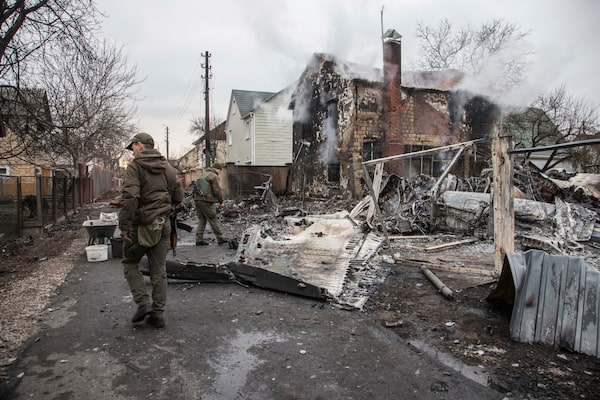
Ukrainian servicemen walk by fragments of a downed aircraft in Kyiv, Ukraine, on Feb. 25.Oleksandr Ratushniak/The Associated Press
When columns of armoured vehicles blasted their way through a Belarus-Ukraine border crossing early Thursday morning and began their charge toward Kyiv, a significant line was also crossed in world history. It is a line that demarcates the “before” and “after” of a historic era with as much clarity and significance as the one crossed when the Berlin Wall was breached on Nov. 9, 1989.
By attempting to seize democratic Ukraine with overwhelming military force, Russian President Vladimir Putin turned the political showdown of the last decade between liberal democracy and illiberal authoritarianism into a physical, territorial battle in the heart of Europe – one whose consequences will shape every country’s political realities through the coming years.
This explosive violence is the culmination of a decade during which the world’s established democracies failed to find common ground in responding to two dramatic and sometimes unnoticed changes in Eastern Europe. One was in Ukraine, whose people became increasingly European-minded, democratic, independent and well-governed after 2014, yet lacked full support from the West. The other was in Russia, where Mr. Putin’s regime shifted quickly, mainly during the same period, from defensive self-contained nationalism into aggressive export of single-party authoritarianism into Asia, the Middle East and Eastern Europe – and grew increasingly intolerant of pluralist democracies in its neighbourhood.
Unlike any other military invasion during the three decades since the Cold War ended, Mr. Putin’s seizure of Ukraine is not a response to any real-world action or provocation or any actual or potential threat to Russia. It is entirely about the question of what a country, its people and its government are permitted to be.
Why is Russia invading Ukraine? What Putin’s troops have done so far in Kyiv, Donbas and beyond
Mr. Putin, beneath his ever-shifting justifications for this war, has been consistently clear about this: “The problem is that in territories adjacent to Russia,” he said during his speech declaring war on Wednesday, “a hostile ‘anti-Russia’ is taking shape.” He made a similar remark to his security council last year: “It appears that Ukraine is slowly but surely being turned into some kind of antipode of Russia.”
That did not mean that Ukraine, or Europe or NATO had any designs on Russia. It means that Ukraine’s post-2014 existence as an independent, democratic and reasonably successful European country with trade and political links both to its east and west, had become intolerable to the Russian President.
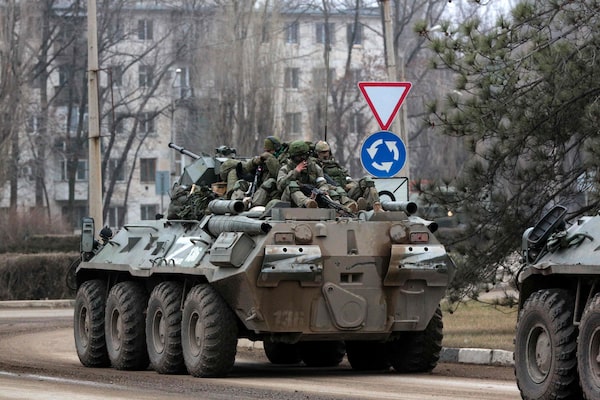
Russian soldiers ride atop an armored vehicle in Armyansk, Crimea.STRINGER/AFP/Getty Images
Russia had once been such a country, even well into Mr. Putin’s first term of office. In the past few years, however, he has remade himself as a reconquistador of the lost Soviet empire – increasingly confident that he could reshape other territories into loyal strongman regimes, whether Georgia, Belarus, Syria or Kazakhstan. Ukraine, even after his 2014 seizure of Crimea, proved harder to sway. But he had confidence, as he had conducted most of those assaults without any serious interference from the democratic world, which remained divided over whether Mr. Putin could be kept at bay by doing business with his energy state, or restrained by isolating him economically.
We are watching the results of that indecision explode today in Kharkiv, in Kherson, in Donetsk, and in the heart of Kyiv. It marks the re-emergence, after many decades, of a form of a full-scale conquest by military; its motive and tactics have been compared, without too much hyperbole, to Hitler’s invasion of the Sudetenland in 1938.
To understand how this historic line came to be crossed, we need to understand the dramatic changes that have overcome Ukraine, Russia and our own countries during the past decade.
Ukraine looks westward
In Wednesday’s marathon war-declaration speech, Mr. Putin repeated another line he’s uttered repeatedly in recent years: Ukraine, in his view, is “fully controlled from the outside.”
The second largest country in Europe is, in the Russian President’s frequent words, merely a colony of the European Union, the United States and NATO. All of Ukraine’s policies merely intended “to attract NATO armed forces and obtain cutting-edge weapons,” and its increasingly successful democracy and leadership are merely “ornamental election procedures” to mask these ambitions.
That’s a seemingly absurd view, considering Ukraine’s years of failure to join either the EU or NATO or get much of anything in terms of arms or support, until very recently, from the U.S. But any support for the Ukrainian people, their elections or their military that does arise, Mr. Putin said, is really “for the United States and its allies, a policy of containing Russia, with obvious geopolitical dividends.” Because Ukraine’s voters have not taken their country in a Putin-like direction, his argument goes, they must be intending to harm Mr. Putin with their choices – or with their very existence.

People gather in the Kyiv subway, using it as a bomb shelter.Efrem Lukatsky/The Associated Press
This is the long-held perspective of a man who spent his formative years inside a Soviet administration that saw Ukrainians as mere steppe-occupying Russians and their country (it legally became a nominally distinct country, albeit under full Soviet control, in 1945) as little more than an instrument of Moscow’s policy. If it is no longer under Moscow’s control, doesn’t it follow that it must be under Washington’s?
What Mr. Putin has declined to notice – and major democracies have often failed to appreciate or aid – is the transformation that has occurred in Ukraine’s people during the past decade.
From the moment it gained its legal independence from the Soviet Union and became an independent country in a December, 1991, referendum (only days before the vote that freed the Russian Federation from the USSR and made it, too, a distinct country), Ukraine has split its allegiances and leadership choices between Moscow and Brussels.
Its first fully post-Soviet leader, Leonid Kuchma, was a Moscow-tutored strongman whose generally corrupt and repressive rule lasted a decade. The 2004 “Orange revolution,” a mass pro-democracy movement, brought the broadly European-minded Viktor Yushchenko into office for half a decade. Then the 2010 election, despite close results that were questioned by Ukraine’s courts, gave the presidency to pro-Putin candidate Viktor Yanukovych.
How did Russia’s invasion of Ukraine unfold? A timeline in maps
The dramatic events of 2014 occurred because Mr. Yanukovych had failed to notice what Mr. Putin ignored: That the Ukrainian people, whichever their language or ethnicity, increasingly saw themselves as part of the community of European democracies, and desired the considerable benefits that had come to the people of Poland, Hungary and the Baltic states after they joined the EU in 2004. This didn’t mean Ukrainians had turned away from Russia – most, polls showed, wanted to be part of both the EU and the community of Slavic countries to their east.
But Mr. Putin made it clear to his Ukrainian counterpart that he could not have it both ways. Mr. Yanukovych withdrew from an EU accession treaty (even though actual membership was likely decades away, at best), and Ukrainians surprised both him and Mr. Putin by revolting in huge numbers. The so-called Euromaidan protests in Kiev’s central square, and the violent efforts to crush them, provoked Ukraine’s parliament to throw out Mr. Yanukovych and call new elections, which, as in every election since, has been won strongly by pro-European parties.
At that point, the seesaw of alternating pro-Moscow and pro-Brussels leaders might have continued, at least for a while. While most Ukrainians had a preference for Europe by 2014, Mr. Putin still held some respect among moderate Ukrainians.
Then he launched his first invasion. The 2014 military seizure of Crimea and de facto occupation of the eastern Donbas region helped secure Mr. Putin’s domestic leadership after the middle-class uprisings of 2012, and it may have attracted bold but ineffective Western sanctions. But its effect within Ukraine was dramatic. Not only did it remove Crimea’s 2.4 million people, a majority of them Moscow-loyal, from the Ukrainian electorate, but it turned most of the remaining 40 million Ukrainians against Moscow, and provoked a far greater sense of national independence among many who’d previously had divided allegiances. Mr. Putin, analysts say, failed to notice this transformation.
Ukrainian volunteer fighters patrol in central Kyiv.LYNSEY ADDARIO/The New York Times News Service
“Putin’s refusal to see Ukraine as an independent country undermines rather than advances his professed foreign policy objectives,” Maria Popova of McGill University and Oxana Shevel of Tufts University concludes in a recent essay on the Russian threat to Ukraine. “Had he taken Ukrainian domestic politics seriously, the current crisis could have been avoided.”
Even after Mr. Yanukovych was ousted in 2014, they write, “Putin could have maintained Russia’s influence and steered Ukraine away from NATO – if only he had allowed the democratic process in his western neighbour to play out without interference. After 30 years of independence, the genie of Ukrainian national identity and statehood cannot be put back in the bottle, no matter how hard Putin tries.”
Contrary to Mr. Putin’s description of Ukraine as a country subject to the whims and incursions of Europe and the United States unless it is “saved” by Russia, the opposite has become true: It’s become a country whose people are hungry for more treaties, more memberships and more arms from the West, and are continually frustrated by their inability to get them.
Indeed, in a public-opinion survey of Ukrainians conducted in December, six out of 10 said that if forced to choose between the European Union or Mr. Putin’s “Eurasian” economic bloc of Russia, Belarus and Kazakhstan, they’d choose the EU. Only 20 per cent would choose the Russian bloc.
Of course, a majority of Ukrainians likely would favour both. And there is absolutely no reason why Ukraine could not have moved to join the EU and even NATO while also being part of Russia’s trade, political and defence networks – no reason, that is, other than Mr. Putin’s belief that supporting one makes your country an “anti-Russia.”
Democracies fall out
Mr. Putin has also changed the way he engages with the world. That may be painfully self-evident now that tanks are rolling into Kyiv, but may not be clear just what has changed, or when the change began.
Of course, the first big transformation was visible by 2008, when Mr. Putin invaded and effectively seized two ethnically Russian territories in Georgia while threatening to re-aim his nuclear missile arsenal at his nominal allies in Western Europe over the expansion of NATO.
Those acts, followed by the seizure of Crimea in 2014, set off a debate among democracies over whether Mr. Putin was simply stirring up chaos in his neighbouring countries in order to disempower pro-Western democratic leaders or to gain concessions from the West.
Although there were serious sanctions directed at Russia by many countries, including Canada, Mr. Putin did actually win a number of de facto concessions.
France and Germany effectively agreed to stop talking about expansion of the EU beyond Poland’s eastern border – both because they preferred to increase the integration among existing countries, but also because they no longer saw the distant hope of EU membership as a stabilizing factor in vulnerable countries such as Turkey, Serbia or Ukraine.
There was also no more discussion of Ukrainian NATO membership. Germany (and earlier the United States) supported and financed the building of the Nord Stream II pipeline, which didn’t initially propose to carry new gas from Russia to Europe; rather, it would have carried existing supplies around Ukraine and Poland, fulfilling Mr. Putin’s ambition of removing those countries’ petroleum-industry revenues and their potential lever over Moscow.
Another significant concession was U.S. President Joe Biden’s decision to hold talks directly with Mr. Putin over Ukraine in December and January. The issue in Ukraine does not officially involve the United States – it is a matter of Ukrainians seeking closer ties to the European Union. It was Mr. Putin who sought talks with Washington, likely because doing so makes his regime appear as important and influential as the Soviet leadership he seeks to replicate. By getting directly involved, Mr. Biden was giving Mr. Putin more credibility than he deserved – and had no effect on the Russian President’s actions.
The leaders of the EU’s most powerful countries tended to agree that Mr. Putin was best kept under control by giving him things – a policy of engagement, rather than one of either containment or of confrontation. That, their senior officials repeatedly said in briefings, was because the serious threat to be avoided was not Russia interfering with the sovereignty of a neighbouring country, but Russia turning toward China in an authoritarian bloc that cut Europe out of access to both countries.
US, EU agree to freeze assets of Putin, Russian Foreign Minister Sergei Lavrov
Final moments of Ukrainian border guards’ fierce stand against Russians become rallying cry
That approach became harder to defend after Mr. Putin repressed, poisoned and imprisoned his country’s sole truly viable opposition politician, Alexey Navalny, or when Russian arms ensured that Syrian dictator Bashar al-Assad remained in power.
Or in 2020, when Belarusian strongman Alexander Lukashenko lost a national election to pro-democracy candidate Sviatlana Tsikhanouskaya. Mr. Putin publicly agreed to back Mr. Lukashenko, even as he nulled and reversed the election results, arrested or exiled all the opposition candidates, violently crushed pro-democracy protests and took power again. Mr. Putin’s fee for supporting his Belarusian ally was not really known until this week, when Belarus became a key staging ground for Russia’s invasion of Kiev, which also involved Belarusian soldiers.
Or earlier this year in Kazakhstan, where Russian troops marched in to crush a popular uprising against increasingly unpopular strongman President Kassym-Jomart Tokayev, ensuring his hold on power.
But it seemed to make sense in Paris and Berlin after 2016, when Europeans were sobered by the prospect of a United States without a reliable or particularly democratic-minded leader – something most senior Europeans believed would be the case again, given Mr. Biden’s weakness. If that was the case, they said, then it was better to keep an iron in Beijing’s and Moscow’s fires, so there’d be a choice of partners. Germany, under both Angela Merkel and, since November, Social Democratic Chancellor Olaf Scholz, stuck to its old style policy of Ostpolitik (eastern-looking politics), which sought influence-through-engagement long after that policy was obviously having no effect. France, under Emmanuel Macron, sought peace through talks and negotiation, until only this week, it became apparent that also wasn’t working.
Mr. Putin could no longer be influenced. While the democratic world argued about whether Mr. Putin could be swayed through sanctions, negotiations or economic engagement, he quietly gave up any interest in making deals. There were never any concessions or offers that could possibly have swayed him away from invading Ukraine, Kremlin observers say. Something in Mr. Putin had changed, and we didn’t notice until it was too late.
Russia turns outward
The big change, which observers say was most visible after 2018, is that Mr. Putin is no longer engaging in military attacks, financing antidemocratic movements and carrying out assassinations in order to stir up chaos and instability in countries in Russia’s periphery and win concessions from the West. He is now doing them in order to transform the reality around him.
In other words, Mr. Putin no longer feels threatened by democratic countries’ potential military or economic superiority, observers say. He feels threatened by their existence.
“In previous years, Putin acted as the leader of a geopolitically vulnerable state surrounded by more powerful and hostile players … an aggrieved and oppressed nation seeking geopolitical justice, a hostage of circumstances created and influenced by others,” writes Tatiana Stanovaya, the founder of the Russian political-analysis firm R. Politik.
Starting in 2018, she says, this all changed: “Intoxicated by Russia’s military success in Syria, its unique role in Central Asia, increased presence in Africa, and, above all, its newly developed ‘wonder weapons,’ Putin switched from feeling like an oppressed player to someone who could go on the offensive far beyond Russia’s traditional sphere of influence.”
“There are constant official and unofficial messages from Moscow that the world has changed, the status quo is no longer legitimate, international institutions and rules have been ruined, diplomacy in its traditional meaning does not exist anymore, everyone adapts as they can, and the value of public statements and positions has collapsed.”

Demonstrators hold placards and chant as they take part in a rally staged in front of the Downing Street gates, in central London, to protest against Russia's invasion of Ukraine.TOLGA AKMEN/AFP/Getty Images
In other words, Mr. Putin is no longer seeking anything from democratic countries. Over the past several months, there has been a heated but ultimately pointless debate over just what concessions might prevent Russia’s massing of troops around Ukraine from resulting in an invasion. While democracies of Europe and North America struggled to find consensus around a response, they remained divided: Germany wanted to keep building a pipeline with Russia. France wanted to keep talking. Nobody agreed what NATO should do or where it should be.
In the end, it turned out that no concessions or punishments would have made any difference. The prospect of restrictions in NATO’s territory or neutering of Ukraine, did not serve as a carrot. The prospect of severe economic damage, political and physical isolation of Russia did not serve as a stick.
It was increasingly clear as January and February dragged on without any reduction of Russian troops on Ukraine’s northern and eastern borders, and it is absolutely certain now that no guarantees or concessions or agreements from the West, no promises to create a neutral or “Finlandized” Ukraine against the will of its people, would have stopped Mr. Putin from launching his invasion.
That invasion was going to happen regardless of how the U.S. and the Europeans responded to his demands, because it had nothing to do with the supposed threats to Russia he claimed to be resisting, or the concessions and limitations he claimed to be seeking. Mr. Putin has made no secret of this: Several times last year, he declared that treaties and promises struck with democratic countries are meaningless and should be ignored, since, in his view, they are made to be broken.
Now that the historic line has been crossed, now that we are in an era whose catastrophes include the seizure of entire European countries simply for existing as functioning democracies, now that the fundamental rules that have held together the international order since the Second World War have been breached, there is a lot less ambiguity.
There is no longer any puzzle about what Mr. Putin is seeking, or what perks or agreements might keep him away from it. The U.S. foreign-policy writer Michael Hirsh this week described this grim state of affairs as having “a silver lining”: “At a time when nationalist sentiment has engulfed many countries and international cooperation has flagged, Putin’s aggression could supply an opportunity to appreciate anew the need for democratic unity.”
That unity was slow to materialize this week, as European countries and the U.S. continued to debate which sanctions and isolating acts might be applied to Russia immediately. But it was clear that there cannot be normal business and political relations again with Russia as long as Mr. Putin is in power – not without a serious moral cost.
Paradoxically, the long catalogue of fictions Mr. Putin unveiled on Wednesday to justify his savage invasion of Ukraine has been transformed into a list of non-fictional, pending realities by the invasion itself.
While contrary to Mr. Putin’s words, NATO had not actually moved toward Russia, and had not had any interest in interfering with Russia, prior to the invasion, it now has little choice but to become singularly focused on the Moscow threat once again – in fact, on Friday there was talk of Finland giving up the last of its military neutrality to join the alliance.
While Mr. Putin’s notion that European and U.S. policy was to use Ukraine as the tool of a “policy of containing Russia” was absurd, it is now a straightforward consensus. The concept of containment, famously applied to the Soviet Union by Western countries after 1945, is now the only really viable option toward Russia.
And while there was previously nothing plausible in Mr. Putin’s overarching notion that successful democratic countries, by dint of their very existence and independent success, were out to get him, it’s now true. We, as democratic countries, now really are all out to get him – or at least to keep him away from our borders. There is no remaining option.
This will be remembered as the week when Vladimir Putin succeeded in uniting the democratic world, and turning his paranoid delusions into mainstream articles of foreign policy. We have crossed the line into a world he has painted black and white.
As Russian forces moved deeper into Ukraine on Friday, videos show weapons fire striking outside a hospital in southeast Ukraine and the aftermath of a battle for a key bridge over the Dnieper River.
The Globe and Mail
Our Morning Update and Evening Update newsletters are written by Globe editors, giving you a concise summary of the day’s most important headlines. Sign up today.

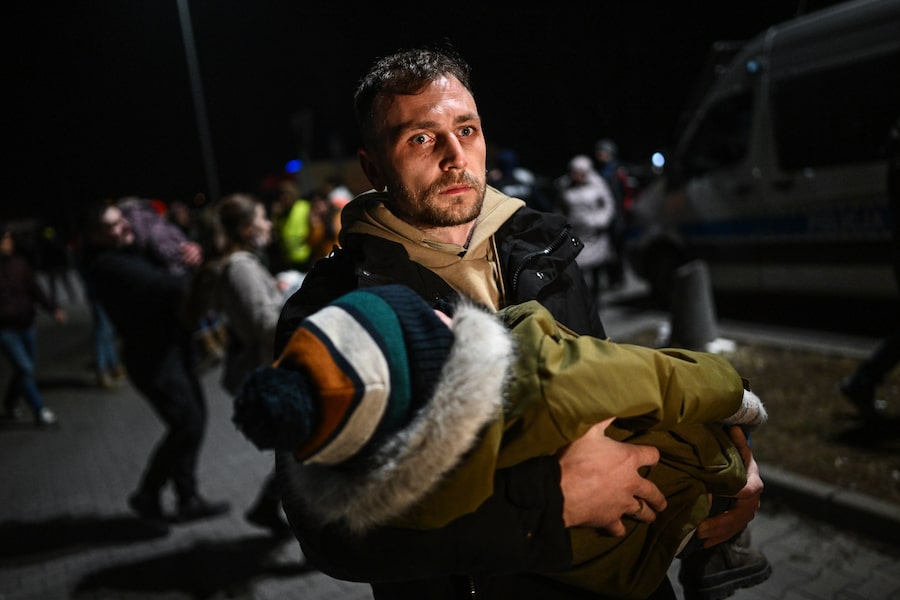
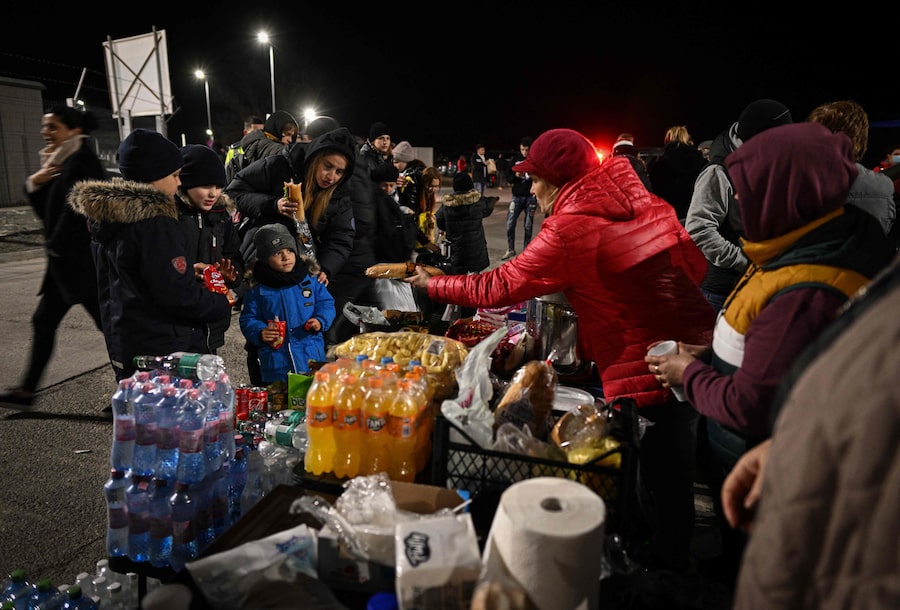
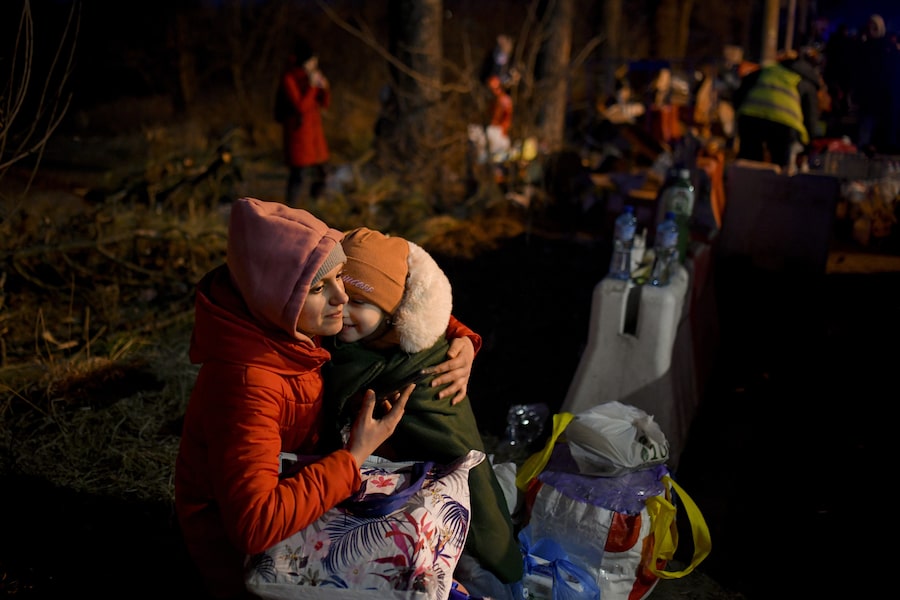
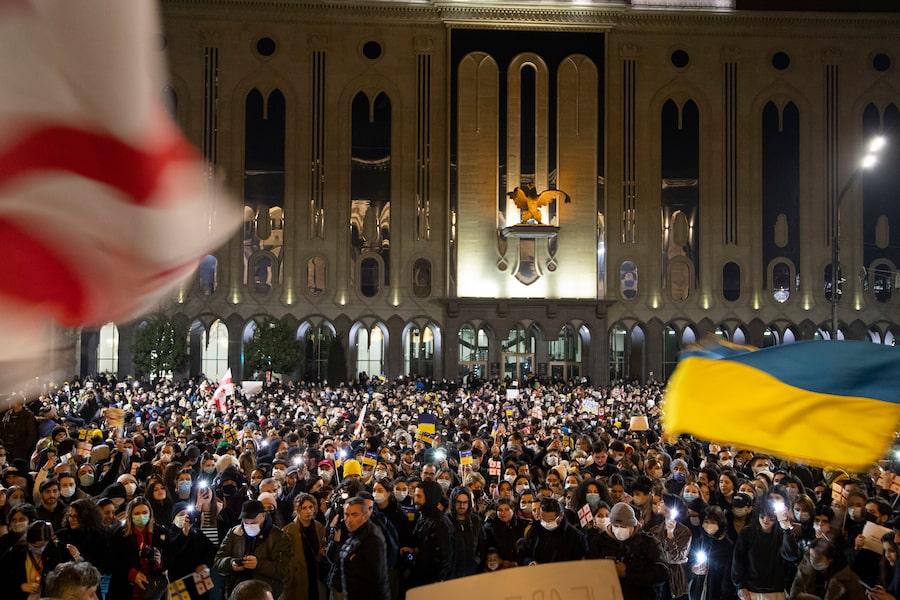


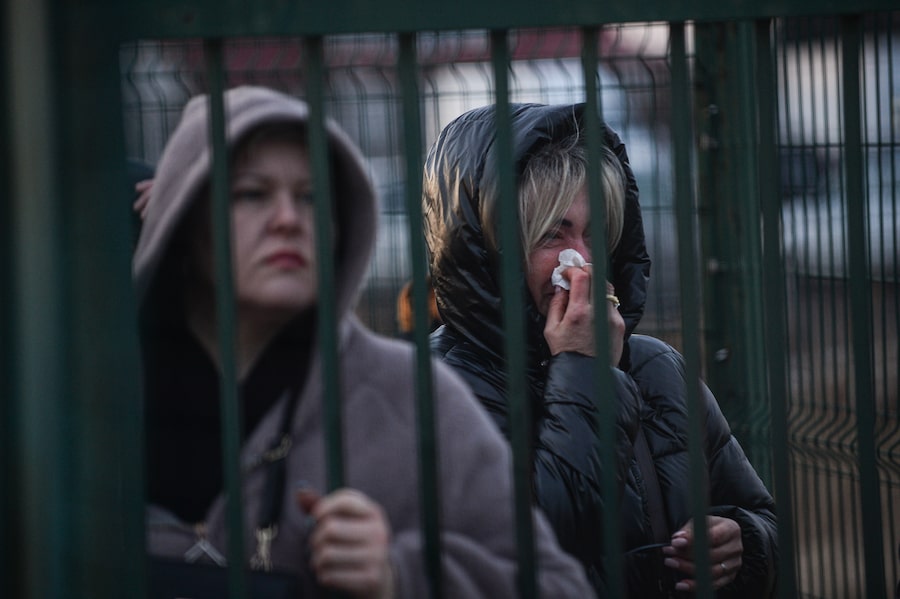



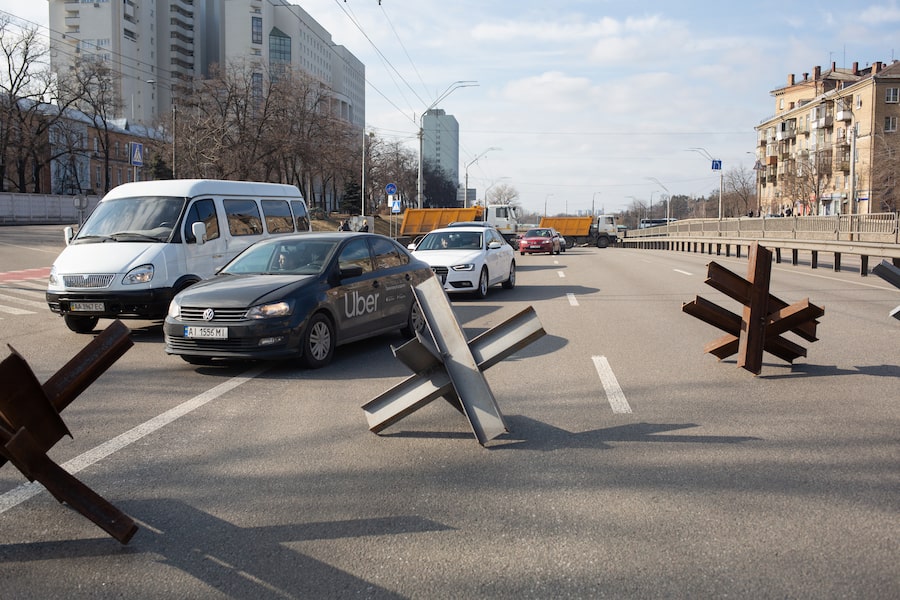





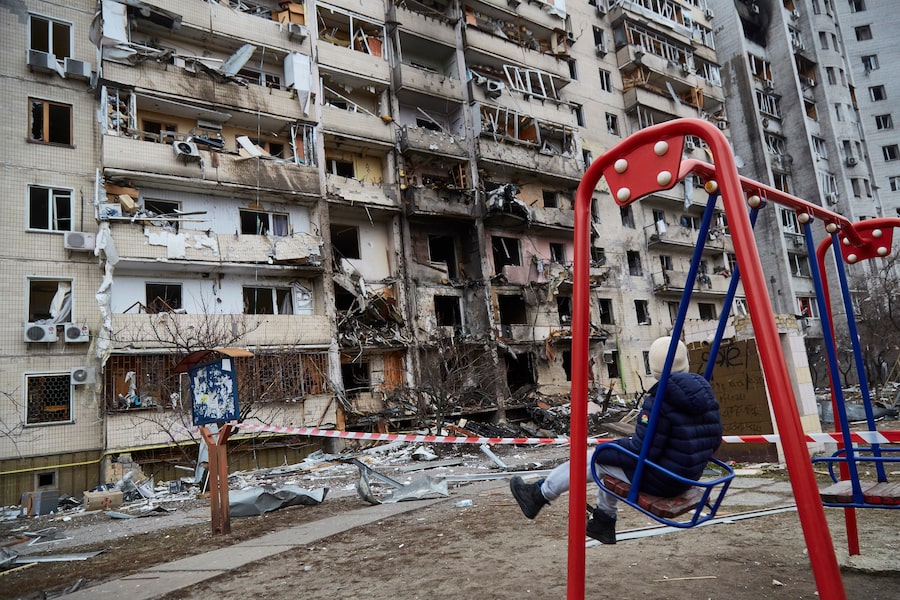

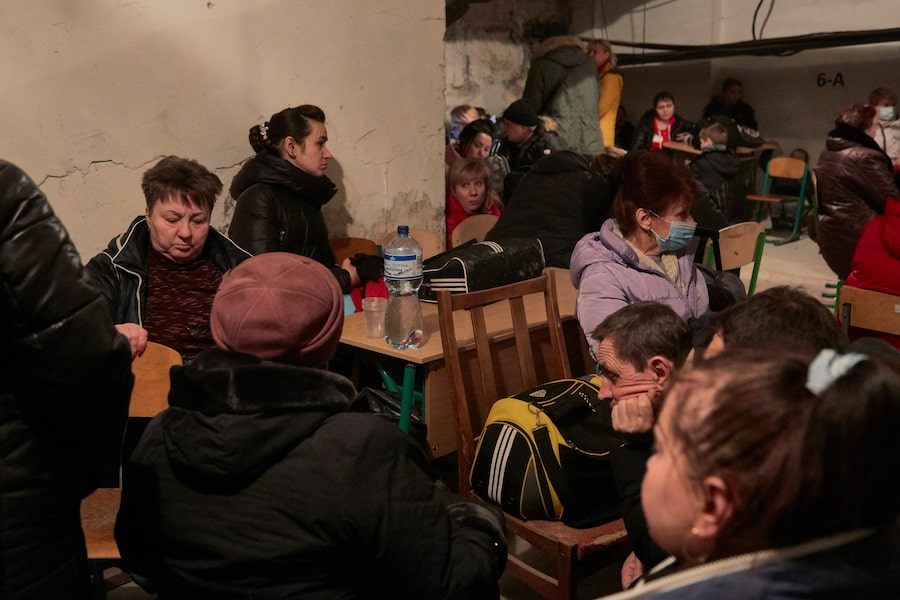


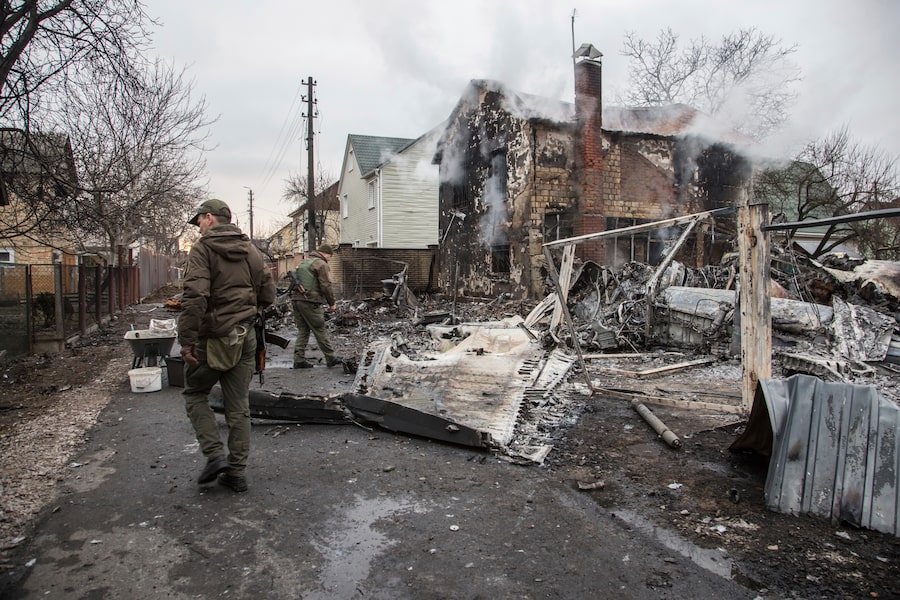



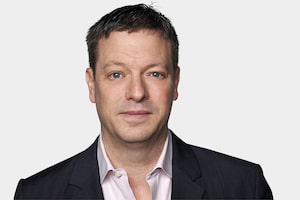 Doug Saunders
Doug Saunders